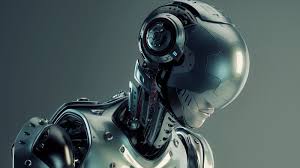Description
The main components used in humanoid robots are:
- Actuators: Actuators are the motors that power the robot’s joints. Humanoid robots typically use electric actuators, but pneumatic and hydraulic actuators can also be used.
- Sensors: Sensors provide feedback to the robot’s controller about its environment and its own movements. This feedback is used to ensure that the robot is operating safely and accurately. Some common sensors used in humanoid robots include cameras, gyroscopes, accelerometers, and force sensors.
- Controller: The controller is the brain of the robot. It is responsible for processing sensor data, generating control signals for the actuators, and maintaining the robot’s balance and posture.
- Power supply: The power supply provides power to the robot’s actuators, sensors, and controller. It can be a battery, a power cord, or a combination of both.
- End effectors: End effectors are tools that are attached to the robot’s hands. They can be used to perform a variety of tasks, such as grasping objects, manipulating tools, and interacting with the environment.
In addition to these main components, humanoid robots may also have other features, such as:
- Speech recognition and synthesis: This allows the robot to communicate with humans using speech.
- Facial recognition and expression: This allows the robot to recognize and respond to human facial expressions.
- Learning and adaptation: This allows the robot to learn from its experiences and adapt to new situations.
-
Humanoid robots work in a similar way to manufacturing robots, but there are some key differences. Humanoid robots are designed to mimic human movement and interaction, so they need to be more agile and versatile than manufacturing robots. They also need to be able to perceive and understand their environment in a more human-like way.
Here is a simplified overview of how a humanoid robot works:
- The robot’s sensors collect data about its environment, including the positions of its limbs, its balance, and the presence of objects nearby.
- The robot’s controller processes this data to determine the robot’s current state and to generate a plan for the next movement.
- The controller sends signals to the robot’s actuators, which move the robot’s joints according to the plan.
- The robot’s sensors monitor the robot’s movements and provide feedback to the controller.
- The controller uses the feedback to make adjustments to the robot’s movements as needed.
This process is repeated continuously, allowing the robot to move and interact with its environment in a controlled and coordinated way.
Humanoid robots are still under development, but they have the potential to be used in a wide range of applications, such as:
- Healthcare: Humanoid robots could be used to assist with patient care, rehabilitation, and surgery.
- Disaster relief: Humanoid robots could be used to search for survivors in collapsed buildings, deliver supplies to disaster areas, and assist with rescue operations.
- Education and entertainment: Humanoid robots could be used to teach children about science and technology, or to provide entertainment at theme parks and other public venues.
- Manufacturing and logistics: Humanoid robots could be used to perform tasks that are difficult or dangerous for humans, such as welding in hot environments or assembling complex products.




Reviews
There are no reviews yet.